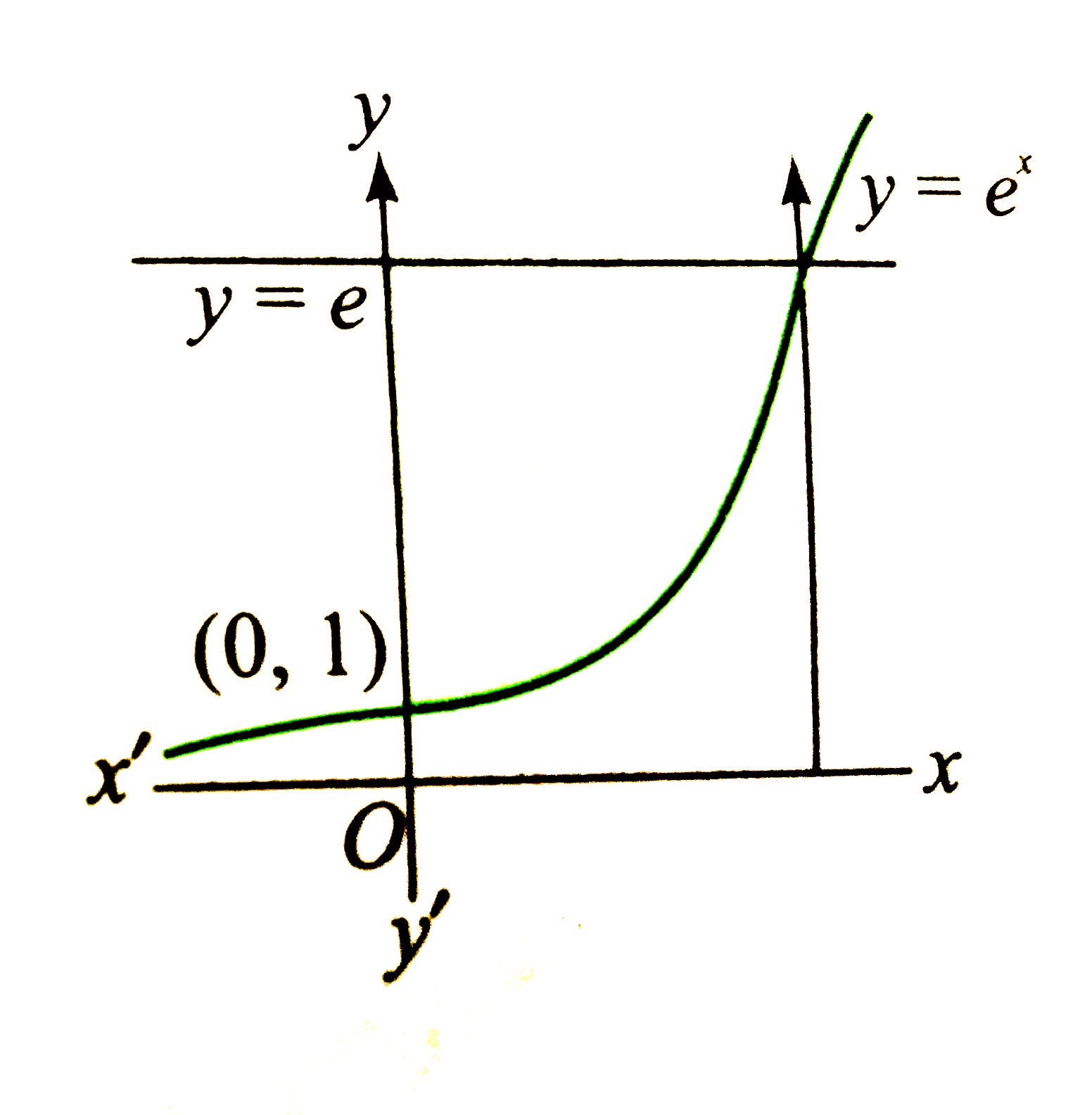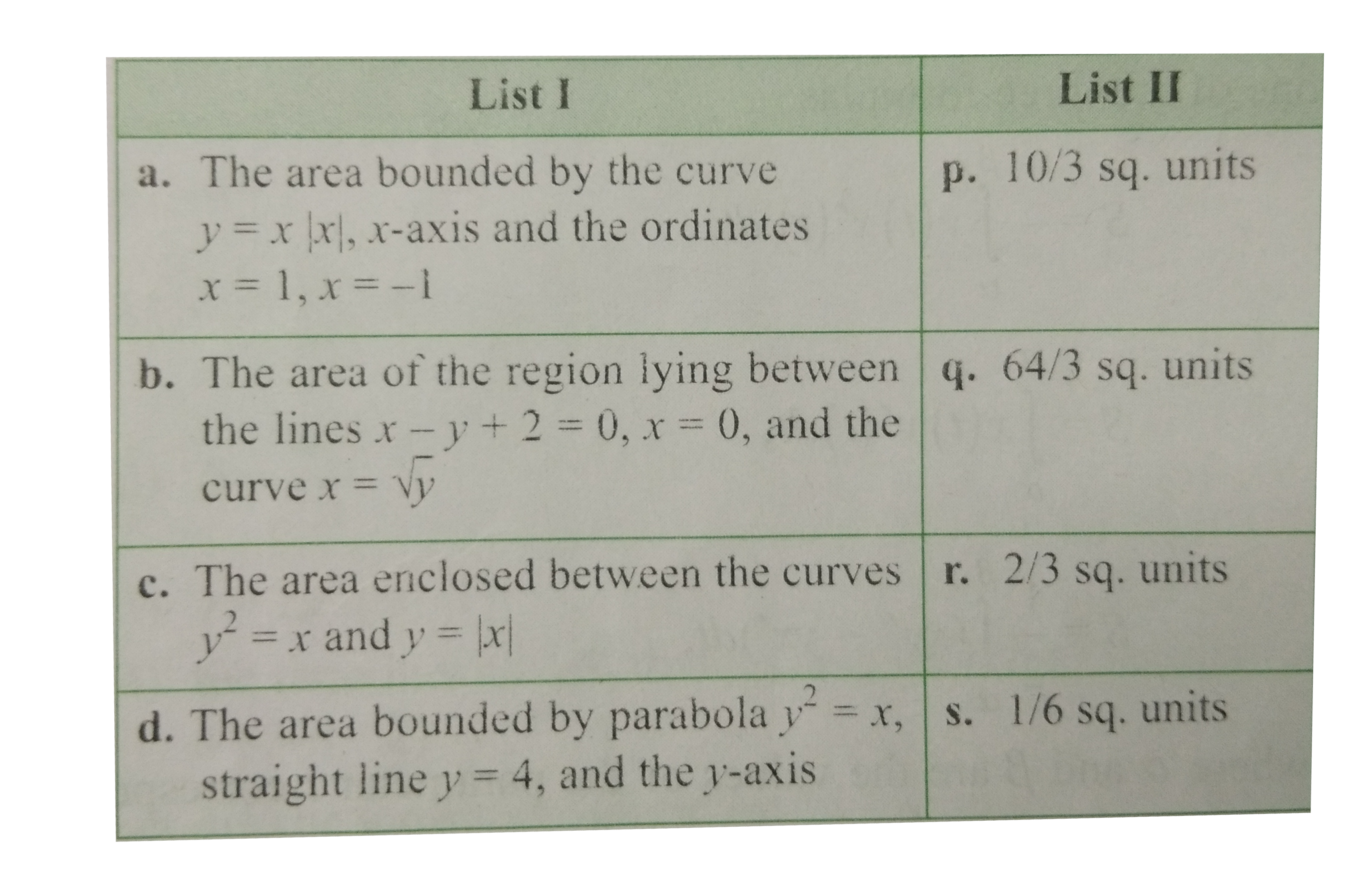The area of the region bounded by the curve y=ex and lines x=0andy=e is e−1 (b) ∫e11n(e+1−y)dy e−∫10exdx (d) ∫e11nydySolution in Bengali
e−1
e∫1 In (e+1−y)dy
e−1∫0exdx
e∫1 In y dy
The correct Answer is:B, C, D
Required area =e∫1 In ydy
=(y In y−y)e1
=(e−e)−{−1}
=1
Also,
e∫1 In ydye∫1 In (e+1−y)dy
Further Required area =e×1−1∫0exdx

Topper's Solved these Questions
- BOOK - CENGAGE PUBLICATIONCHAPTER - AREAEXERCISE - Linkded Comprehension Type21videos
AREA
- BOOK - CENGAGE PUBLICATIONCHAPTER - AREAEXERCISE - Matrix Match Type5videos
AREA
- BOOK - CENGAGE PUBLICATIONCHAPTER - AREAEXERCISE - Exercises - Single Correct Answer Type40videos
AREA
- BOOK - CENGAGE PUBLICATIONCHAPTER - APPLICATIONS OF DERIVATIVESEXERCISE - Subjective Type2videos
APPLICATIONS OF DERIVATIVES
- BOOK - CENGAGE PUBLICATIONCHAPTER - BINOMIAL THEOREMEXERCISE - Comprehension11videos
BINOMIAL THEOREM
Similar Questions
Let Ar be the area of the region bounded between the curves y2=(e−kr)x(where k>0,r∈N) and the line y=mx(where m≠0), k and m are some constants
A1,A2,A3,… are in G.P. with common ratio03:04View SolutionMatch the following lists :
 04:20View Solution
04:20View SolutionArea enclosed by the curve y=f(x) defined parametrically as x=1−t21+t2,y=2t1+t2isequa<o πsq.units (b) π2sq.units 3π4sq.units (d) 3π2sq.units
03:48View SolutionProve that for λ>1, the equation xlogx+x=λ has least one solution in [1,λ].
03:24View SolutionConsider a G.P. with first term (1+x)n, |x|<1, common ratio 1+x2 and number of terms (n+1). Let 'S' be sum of all the terms of the G.P., then
The coefficient of xn is 'S' is03:47View SolutionIf y=ex−e−xex+e−x , prove that dydx=1−y2
03:36View SolutionIf ex+ey=ex+y , prove that dydx=−ex(ey−1)ey(ex−1) or, dydx+ey−x=0
05:33View SolutionThe area bounded by y=∣∣e|x|−e−x∣∣, the x-axis and x=1 is (A) ∫10(ex−e−x)dx (B) e+e−1−2 (C) e+e−1+2 (D) (√e−1√e)2
06:28View Solutionयदि ex+ey=ex+y हो,तो सिद्ध कीजिए कि dydx=−ex(ey−1)ey(ex−1)
02:36View Solutionवक्रों y=ex,y=logex तथा रेखाओं x = 1, x = 2 द्वारा परिबद्ध क्षेत्र का क्षेत्रफल है :
10:39View SolutionIf ex+ey=ex+y, prove that :
dydx=−ex(ey−1)ey(ex−1).04:01View SolutionCompute the area of the region bounded by the curves y=ex(log)exandy=logxex
04:47View SolutionCompute the area of the region bounded by the curves y−ex(log)exandy=logxex
03:35View SolutionIf y=ex−e−xex+e−x , prove that dydx=1−y2
05:31View SolutionIf ex+ey=ex+y , prove that dydx=−ex(ey−1)ey(ex−1) or, dydx+ey−x=0
11:35View SolutionIf ex+ey=ex+y, prove that dydx=−ex(ey−1)ey(ex−1)
01:04View Solution

